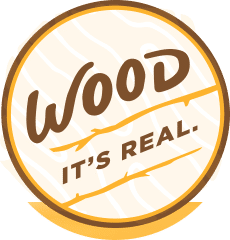This isn’t hyperbole: Nearly everything we use in our daily lives is made possible by wood and trees. From the moment you wake up, wood is there to make your day easier and a bit more enjoyable. There are thousands of things in the world made from wood, and we’re going to take a look at 10 of them.
Piano Keys
Next time you sing along with Billy Joel, thank the good wood. Piano Keys have always been made from wood. These days they’re typically made from spruce of basswood, with spruce being the choice for higher quality instruments. Traditionally, black keys were made from ebony, and the white keys were covered with strips of ivory, but modern pianos have replaced ivory with plastics.
Ping Pong Balls
Most people think those bouncy white balls are made from plastic, but they’re actually made of celluloid, which is not a true plastic, but comes from a tree. Celluloid is a composition of nitrocellulose and camphor, which is a waxy solid found in some trees.
Fireworks
Every great Independence Day celebration includes a fireworks show. Fireworks of any size are made possible by trees. Fireworks are constructed in intricate cardboard tubes, from the tiny cardboard tubes that shoot out sparks to the giant professional-grade fireworks with the power to amaze an entire town.
Guitars
What do Jimi Hendrix, Eddie Van Halen, and James Taylor have in common? It’s wood. Guitars are almost exclusively made from wood. Modern guitars are typically made from mahogany, ash, maple, basswood, agathis, alder, poplar, walnut, and spruce. Different wood varieties give instruments their own tonality and distinct sound.
Crayons
The king of elementary school art supplies comes from wood, too. Crayons are made from paraffin, a waxy substance derived from wood, coal, or petroleum. The paraffin is mixed with pigments to form the crayon itself, and it is typically wrapped in a paper casing and printed with the manufacturer’s name, and a fun color name. Burnt Sienna, anyone?
Chewing Gum
Mr. Wrigley was also in the wood business. Chewing Gum is made from Chicle, a natural gum collected from several species of trees, including the zapota, chicle, and stminodella. Chicle is tapped from the tree, collected in small bags, then boiled until it reaches correct thickness. Eventually the chicle becomes the Juicy Fruit we all know and love.
Syrup
Is there anything better than a plate of fluffy buttermilk pancakes covered with thick, sweet maple syrup? Syrup starts out as sap inside a maple tree. In the springtime when temperatures rise, a process called “sugaring” allows the sap to drip from holes drilled into the trees. The sap is then processed, and turned into the breakfast treat we all enjoy.
Golf Tees
When the pros are getting ready to hit their first drive at the US Open, they’re depending on the help of a tiny piece of cedar – the golf tee. Traditionally, golf tees are made of wood. The primary wood used in tee production is red cedar. The tees are then sanded smooth, coated with a weather resistant paint, and stamped with the manufacturer’s logo.
Coffee Filters
The best part of waking up, is wood in your cup. Coffee filters are made from crepe paper, which is composed of pulp from softwood trees. The qualities of crepe paper allow coffee to flow freely between the filter and the filtration funnel, leaving you with a hot cup of dark, delicious, caffeinated goodness.
Bowling Alley Lanes
This favorite American pastime is made possible by two types of wood. Bowling alley lanes really take a beating, and rely on wood’s durable qualities. The longest length of the bowling lane is constructed of pine. This softwood is resistant to decay and shrinkage, and pretty durable. The portions of the lane where the bowler stands, and where the pins stand, are made from maple. The durability of maple makes it an ideal surface for frequent refinishing, which is often done in bowling alleys.





